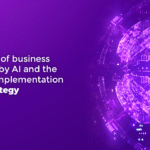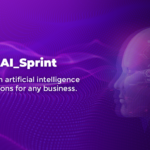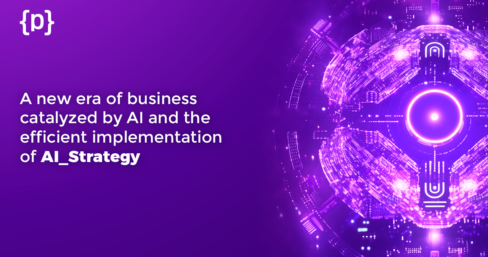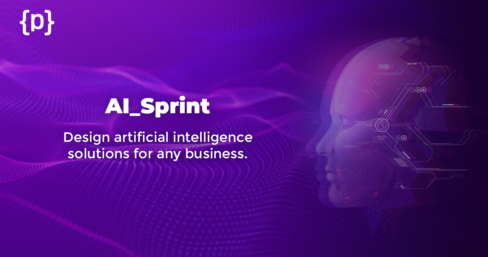If you ever tried to secure investments to develop a digital product (for a startup or a corporation), you were probably asked, ‘When can we expect break-even?‘. If that happened to you, congratulations, you gave the first step of exposing your vision to stakeholders. In theory, the goals are simple: generate revenue or cut costs. I never saw a development project without any expectations from investors. There will always be close eyes on your results.
Yes, there are many ROI forecasting methods, but the unpredictable character of software development added with market forces and serendipity transforms these projects into a sort of gamble. But what if we could at least forecast if the risk is super high or medium? Would investors like to know that? You bet yes, let’s see how.
This article covered how to estimate the average cost of a simple MVP under many assumptions for simplification. Today, we will go further into the MVP development process by analyzing how innovation-strategy decisions might influence how long a product owner might wait for the desired break-even and ROI to appear in the reports.
Fundamentally, I want to prove how an 80/20 split between sustaining and disrupting innovation might be a good idea if you have a limited budget for developing your MVP.
I’m going to tell you based on many real cases, some successful and others not. It applies to startups that are planning to build a digital product (for B2B or B2C) or for corporations that want to create new internal applications, for instance: a new CRM for the sales team, a new HR toll to support the employment branding strategy, a new web-application to support the marketing department, a mobile app to help customers better communicate with consultants…the possibilities are endless.
What connects those examples is that they all require a development team to create brand-new software, and they all have stakeholders with high expectations on when the ROI will start appearing. Startup investors are looking forward to the first revenue stream. C-level executives, board members, and shareholders are looking forward to seeing the promised cost-cutting, new revenue streams, or increased current streams.
Most of the time, an innovative digital product is a risky investment since development costs are relatively high and forecasting when ROI might appear is crucial to keep investors’ expectations in check.
This article shows that decreasing these risks is possible, even when disruptive innovation is the final goal. We need then to dig deeper into different innovation types.
First, let’s understand the difference between disrupting and sustaining innovation. Disrupting is connected to the famous Blue Ocean Strategy by W. Chan Kim and Renée Mauborgne: It is what most of us are trying to achieve, at least by my personal experience working with Startups and Corporations. Disrupting, in this case, is surprising the customers (or internal users, for corporations) with something not expected, in other words, by manipulating one or more of these three components of the canvas business model: Value Proposition, Revenue Model, and Channels.
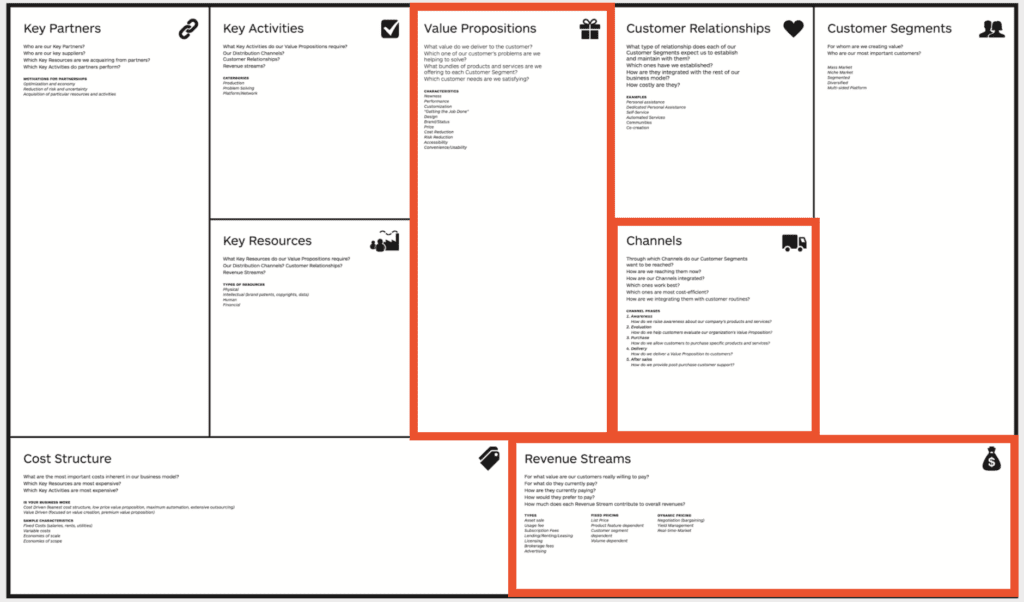
It’s easy to give examples of disruptive innovation since we are only aware of those which succeeded, like Uber, Airbnb, TikTok, QuintoAndar, Netflix. Those are my favorite examples since they are easy to understand. They delightfully play with those red boxes. Revenue Streams here is not how much the product or service costs. Cheaper means sustaining innovation (unless you surprise the customer with zero cost!). Disrupting means drastically changing how the customer can pay for using the product or service: per unit, per hour, monthly subscription, yearly subscription, endless options.
Uber created a new value proposition by drastically changing the experience of ordering personal transport and making its payment dumbly easy. QuintoAndar gives an extra security lawyer to real estate owners against trouble tenants. TikTok delivers content in an unprecedented format creating new social media dynamics. Netflix changed the way people consume movies and video streaming.
In other words, this is the creation of a new market, a blue and calm ocean waiting for brave sailors who dared go beyond facing all the odds, making their visions a reality and profiting with it. It looks beautifully appealing in the paper; it’s like a shot of motivation to wake up and start changing the world and having our names in history books. The success we crave for. But in reality, it’s a long and expensive journey that many founders & intrapreneurs (including me a few years ago) underestimate.
I’ve seen many disruptive innovation cases in corporations if we consider that different departments are customers of each other. They all buy and sell, creating an internal market situation where various providers are competing. I’ve seen cases of internal CRM tools trying to thrive in one sales department: a competition slightly different from SaaS for the mass as Netflix, but still, a match. The most exciting aspect of new internal digital tools for corporations is that the final users don’t need to pay for them. The budget comes from above, which creates a situation where users have to use it; otherwise, their managers will generate problems. I’ll cover this dynamic in another article; it’s one of my favorite topics.
Now you know what disrupting innovation is and why reaching market-fit it’s a challenge in this case, even when the goal is to create a new internal digital tool in an established company.
In Part 2 of this series, I’ll explain what sustaining innovation is, and in Part 3, how it all connects to the MVP development, influencing its timeline and cost.
In the meanwhile, keep creative & thank you for reading.
Felipe Rebello is Head of Growth EMEA at Performa_IT – Talk to him: https://www.linkedin.com/in/rebello/
Visit our website: https://performait.com/?idioma=en

